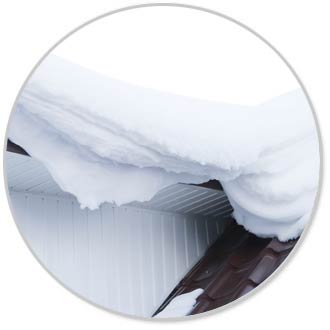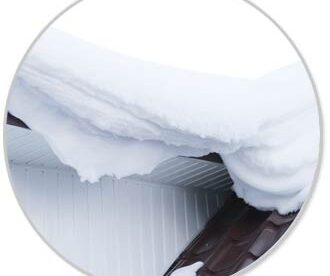 As winter unfolds, your Connecticut home could contend with a serious issue: An ice dam forming on the edge of your roof. Not to be confused with ordinary icicles, ice dams form when a wall of ice accumulates at your roof’s base, usually by the gutters or soffit. Its presence prevents melted snow from fully draining off and continues to grow into a large ice dam.
As winter unfolds, your Connecticut home could contend with a serious issue: An ice dam forming on the edge of your roof. Not to be confused with ordinary icicles, ice dams form when a wall of ice accumulates at your roof’s base, usually by the gutters or soffit. Its presence prevents melted snow from fully draining off and continues to grow into a large ice dam.
While keeping your gutters clean can prevent this from happening to your home, other factors contribute to an ice dam’s formation.
Roof Conditions
During winter in New England, homeowners cannot avoid having snow on their roofs. From here:
- Your roof’s temperature could be uneven. Generally, the higher points stay above freezing while the lower points dip below. This causes snow to melt on top and freeze at the bottom.
- Poor ventilation often contributes to this phenomenon. For instance, if warm air builds up in your attic, any snow on the roof will melt, even if it’s below freezing outdoors. As well, factors like recessed lighting, heating ducts and skylights also raise your roof’s temperature.
- A flatter pitch – roof steepness – tends to have a higher incidence of ice dams.
- If you have a gutter at the eaves, snow and ice easily get caught in its shape. If uncleaned, the more ice and snow accumulate, and the greater your chances of an ice dam.
Damage
Ice dams are more than an inconvenience. Should one go unchecked, your home may start showing signs of damage:
- Melted water backs up and gets underneath your shingles. From here, it drips into your home, going through the insulation, ceiling and exterior walls.
- Should the water continue to seep through your home, sheetrock and paint may become damaged and insulation may no longer be effective.
- If the ice dam falls down or breaks apart, it may pull off shingles and gutters, dent your car and potentially injure the people or pets inside.
- Even if the dam stays in place, it dampens the roof sheathing, which can turn into a mildew problem and eventually begin to rot.
- An ice dam may become massive enough to cause structural damage that leads to flooding.
Signs of an Ice Dam
How do you know if your property has an ice dam problem? Look for the following signs:
- Icicles form on the roof’s front edge or along the gutter.
- You see ice coming through the soffit or forming behind the gutter.
- You see a wet film or ice on your home’s exterior wall.
- Water has started seeping through a door frame or window.
Removing and Preventing Ice Dams
Once you’ve identified an ice dam, how do you get rid of it?
- Any time you are up on a ladder, have someone spot you to prevent falls and resulting injuries. Never stand on the top step of a ladder, which is not meant to support your full weight.
- Only break it apart in small chunks – and never with an axe or a sharp tool, which can take off the shingles. Rather, you or a professional should tap the ice with a mallet or hammer. Be sure to protect your eyes from flying ice chunks by wearing safety goggles.
- Clean out the gutters and downspouts. This is where the dam likely started forming.
- See if you can melt through the dam with calcium chloride. However, avoid using rock salt, as this can damage the paint and metal underneath.
After you’ve gotten rid of the ice dam, how do you prevent another one from forming?
- If warm air leaks from your roof, seal off all points below the sheathing.
- Insulate your living area, so warm air isn’t traveling up to the attic.
- Add ventilation between the insulation and roof sheathing.
- Make a maintenance plan. Clean out your gutters each fall, so the debris inside doesn’t trap water. In winter, regularly clear snow and ice off your roof, so it doesn’t accumulate.
Are you on the pathway to homeownership? For a property to call your own, explore By Carrier’s Connecticut communities. To learn more, contact us today.






